The world is full of awe-inspiring places that every traveler should see at least once in their lifetime, such as breathtaking landscapes, stunning buildings, and timeless rituals and ceremonies.
However, there are also locations that, despite their beauty, bear the mark of a violent history that has left its imprint on the site and the people who live there.
Many of the world’s creepiest places have inspired horror stories and frightening urban legends.
Finding some of these most haunted places was not difficult, as the legends surrounding them are frightening, and only the bravest dare visit such sites.
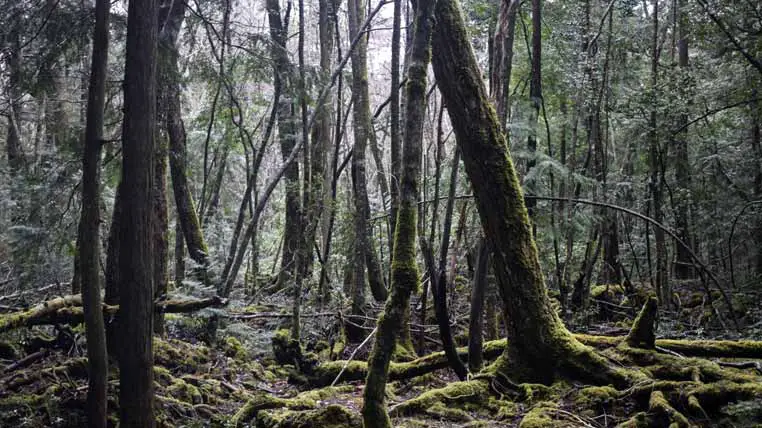
Most Haunted Places in the World - Aokigahara Forest, Japan
One of the most haunted places in the world is the Aokigahara Forest in Japan.
The dense forest covers hundreds of hectares at the base of Mount Fuji and is the birthplace of countless horror stories and urban legends. The high number of suicides in the forest and the belief that it is haunted by demons have made it one of the most sinister places in the world.
Aokigahara’s dark history dates back to feudal Japan when suicide was considered honorable. Samurai warriors would end their lives through seppuku rather than fall into enemy hands or disgrace their masters.
Even during World War II, kamikaze pilots made the ultimate sacrifice for their country, which was honored by Japanese society.
Today, those seeking to end their lives often choose the seclusion of the Aokigahara Forest, making it one of the most frequently selected locations for suicide in Japan.
The forest’s dense vegetation makes it difficult to find even a ray of light at ground level. The high concentration of iron in the volcanic soil often interferes with compasses or mobile phone signals.
The forest’s sinister reputation is further perpetuated by the yurei legend, which states that spirits filled with hatred, sadness, and a desire for revenge haunt the woods.
The publication of Seicho Matsumoto’s novel Kuroi Jukai in 1960, which ended with the suicides of two lovers in the forest, helped to make the Aokigahara Forest even more infamous in Japan.
This was followed by Wataru Tsurumi’s bestseller The Complete Suicide Manual, which recommended the forest as one of the best places to die and described different methods of suicide.
In 2010, police reports showed that at least 247 people attempted suicide in the forest, but the number is likely much higher, as many bodies have never been found.
According to Japanese mythology, those who leave the marked trails and venture into the forest are never seen again, and the high number of suicides, horror stories of spirits and ghosts, and the unusually dense vegetation have all contributed to making the Aokigahara Forest one of the most sinister places in the world.
So why is the Aokigahara forest considered one of the most sinister places in the world?
According to Japanese mythology, Aokigahara is haunted by demons, which is why many Japanese people still fear entering the forest. It is said that those who dare to leave the marked trails and plunge into the forest never return.
This horror story may be as true as it gets.
Those who are not familiar with the area can easily get lost in the thicket of the forest.
Furthermore, the high concentration of iron in the volcanic soil often interferes with compasses or the signal of mobile phones.
Another reason why people believe that the forest is haunted is due to the yurei legend. According to Japanese mythology, yurei are spirits filled with hatred, sadness, and a desire for revenge.
One terrifying legend, born during the great famine of the Edo period (1782-1788), talks about desperate villagers who would abandon their sick relatives in the forest. This ensured that at least some family members could survive the famine.
Those abandoned in the forest died slowly from starvation, thus transforming into yurei.
In Japanese popular belief, if a person dies with a deep hatred, anger, sorrow, or a desire for revenge, their soul cannot leave this world and continues to wander, appearing to unlucky people who cross their path.
The large number of suicides that occur here, the horror stories of spirits and ghosts, and the unusually dense and lush vegetation have transformed the Aokigahara forest into one of the most sinister places in the world.
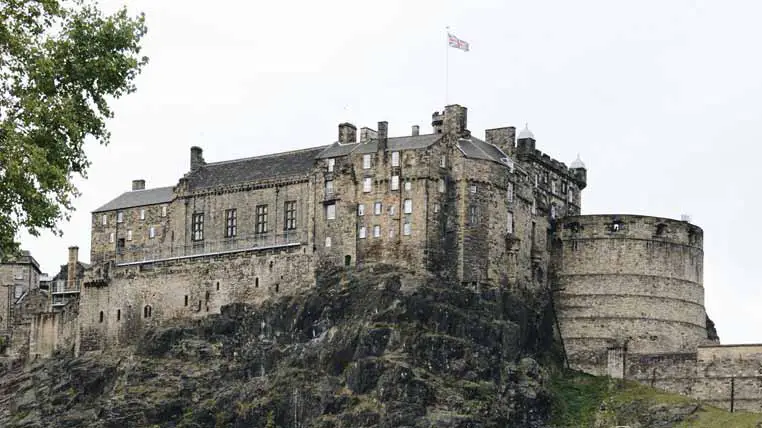
Edinburgh Castle, Scotland
In the ninth place on my top of the most haunted places in the world is Edinburgh Castle, Scotland.
Intrigue, murder, burned witches, and bloody sieges: Edinburgh Castle has a troubled yet fascinating history.
The centuries-old castle is an important landmark of the Edinburgh skyline, rising majestically above the city on the top of a massive volcanic rock.
But the castle didn’t always have its current shape.
Throughout the centuries, Edinburgh Castle gradually expanded. The oldest part is St. Margaret’s chapel, built around 1130 and served as the royal church.
Around 1510, King James IV commissioned the building of the Great Hall, and the National War Memorial was added after World War I.
Visitors can see the crown jewels, the royal chambers, and, as befits any medieval castle, its sinister dungeons.
But the cold stone walls conceal more than a troubled history, hiding some of the most terrifying horror stories.
The most tragic story is that of the mysterious Grey Lady. Dressed as a noblewoman of the 16th century, the enigmatic figure has been seen wandering the castle’s ancient corridors, sometimes sighing, sometimes weeping.
The Grey Lady is associated with two equally tragic historical figures.
Some say she could be Janet Douglas, a woman accused of witchcraft by the cruel and vengeful James V of Scotland (1512-1542).
Although it was known that the accusations were unfounded, no one dared to challenge the King, and Janet Douglas was sentenced to death by burning at stake. The sentence was carried out on July 17, 1537, right in front of her son.
Others speculate that the phantom could be Mary of Guise (1515-1560), the mother and regent of Mary Stuart, Queen of Scotland (1542-1587).
Mary of Guise died during the Scottish Reformation, a turbulent period in Scotland’s history.
When she died in June 1560, her body was held at the castle for several months, wrapped in cloth and a lead coffin to keep the smell at bay – before Protestant nobles allowed her remains to be transported home to France.
Edinburgh Castle holds an important place in the top of the most sinister places in the world due to its paranormal manifestations, even in our days.
Some testimonies speak of the rhythmic sound of a drum that sometimes echoes through the castle’s dark corridors. According to legend, the appearance of the mysterious drummer foretells an attack against the castle.
In a series of events in 1650, several guards reported repeated appearances of the phantom drummer along the castle’s battlements.
Exasperated by the sentinels’ reports, the castle’s governor decided to investigate the matter himself to reveal the mystery of these ghostly visions.
He saw no ghost, but he heard a drum playing an old Scottish war tune and the sound of many marching feet. The sound of the ghostly procession headed towards the governor, passing him by afterward.
Drum rhythms continued to be heard inside the castle until, in the same year, the army led by Oliver Cromwell besieged the castle.
In 2003, several workers carrying out restoration work inside the castle claimed to have been harassed by the ghosts of prisoners who had met their end in the dungeons beneath the castle.
After several photographs of the workers framed by ethereal blue orbs appeared in the media, the workers refused to continue the restoration project.

The Most Haunted Places in the World - Paris Catacombs
Our list of the most haunted places in the world continues with the famous Catacombs of Paris (fr. Catacombes de Paris). In these subterranean ossuaries are the remains of over six million people.
Stretching south from the former city gate, Barrière d’Enfer (trans. Gate of Hell), the catacombs were created to remove the overcrowded cemeteries in the old city.
Work on the catacombs began in 1774 after a series of cave-ins of the subfloors of the Saint Innocents cemetery, the largest cemetery at the time, revealed thousands of corpses in various stages of decomposition.
That same year, the authorities approved the exhumation and relocation of human remains from most of the cemeteries in the city. These were transported, at night, with the help of covered funeral carts.
The remains were thus moved into the abandoned mine galleries near Rue de la Tombe-Issoire.
As expected, the operation was carried out in great haste and disorder, and for many decades the catacombs were nothing more than a colossal repository of human remains.
It was only in 1810 that Louis-Étienne Héricart de Thury, the director of the Paris Mining Inspection Service, launched a significant renovation process that would turn the caverns into a visitable mausoleum.
He ordered stacking skulls and bones into the patterns that visitors can see today in the catacombs.
Louis-Étienne Héricart de Thury also took advantage of various macabre decorations he found stored on the Tombe-Issoire property, most likely hidden there during the 1789 revolution.
Louis-Étienne created a special room in which he displayed various mineral monsters excavated from beneath the city, a museum dedicated to skeletal deformities in which he displayed several deformed skeletons and inscribed thousands of tablets with terrifying messages which he placed along the underground galleries.
The Paris Catacombs are visited by approximately 550,000 tourists each year. They are greeted at the entrance by a macabre warning: “Halt! This is the Empire of the Dead!”
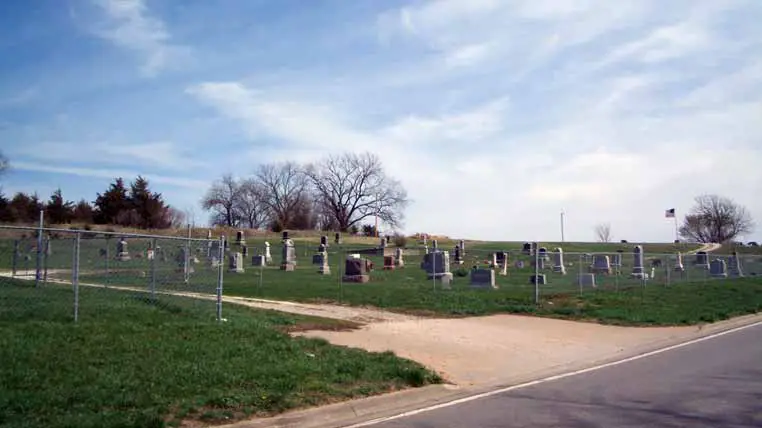
The Most Haunted Places in the World - Stull Cemetery, Kansas
Some locations inspire fear and terror around the world – places like Bachelor’s Grove or Stull Cemetery – that defy the laws of rationality and can easily fit into any list of the most haunted places in the world.
So, position 7 on the top of the most sinister places in the world is occupied by Stull Cemetery in Kansas, USA.
The paranormal events taking place in such energy-charged sites exceed the norms of horror stories and traditional urban legends and enter the realm of the diabolical. Stull is said to be so malefic that it houses a true “gateway to Hell” through which the Devil himself appears to his followers.
Stull is a small town in Douglas County, Kansas, United States. Founded in 1857, the settlement was initially known as Deer Creek until it was renamed after Sylvester Stull, the only postal worker in the community’s entire history.
Starting in the 70s, the town became known due to an apocryphal legend that the cemetery on the outskirts of the town was possessed by demonic forces.
The horror story has inspired numerous film productions – such as the Swan Song episode from the 5th season of the famous American series Supernatural, Turbulence 3: Heavy Metal (2001), or Nothing Left to Fear (2013).
In an interview with Complex Magazine, pop star Ariana Grande talked about the terrifying experience she had when she tried to shoot one of her music videos in Stull Cemetery, the star saying she was attacked by demons.
Stories about supposed demonic activities in Stull date back to around 1900. Still, the first such stories were printed in November 1974, when the University of Kansas student newspaper published an article about a series of strange occurrences in the Stull churchyard.
According to the article, Stull was one of the two places on Earth where the Devil appeared in person twice a year, an event that was well-known by the townspeople.
The article also contains a few testimonies. A young man claimed to have been grabbed by the arm by an unseen entity while visiting the grave of a deceased relative. In contrast, others spoke of inexplicable memory losses, dizziness, and signs appearing on the skin, all of these happening in the vicinity of the cemetery.
The newspaper article became so popular that on March 20, 1978, over 150 people waited in the cemetery for the Devil’s arrival, an event that, obviously, did not occur.
But this did not stop the spread of all sorts of strange legends.
For example, some young people said they witnessed demonic manifestations at Stull. Passionate about the paranormal, they wanted to record the entities that, they believed, haunt the cursed place. But a strong wind suddenly began to blow.
The young people tell how, scared, they ran back to the car only to find, in amazement, that the vehicle had been moved from its place and was on the other side of the access road.
Another man claimed to have experienced the same strong current inside the old church, not in the cemetery. He reported how a strong gust of air knocked him to the floor and prevented him from getting up for several minutes.
In fact, the almost collapsed church is said to be the center of paranormal manifestations, with several witnesses claiming that it does not rain inside the church, although its roof is completely destroyed.
Author Lisa Hefner Heitz collected numerous such urban legends, which she later published in her book Haunted Kansas (1997).
The horror stories include accounts of the Devil’s appearances on the last winter night or on the first spring night. It is said that he visits a witch buried there.
By chance or not, there is an old tombstone in Stull Cemetery on which the word “Wittich” can still be distinguished.
Another controversial story features Pope John Paul II, who, during a visit to the United States, asked his pilot to change the flight path to avoid the town of Stull and the neighboring region.
The reason for this detour, the story goes, was that the sovereign pontiff did not want to fly over “unholy ground.”
The legends around the “gate to Hell” have grown so much that on Halloween night 1989, over 500 curious people gathered in Stull Cemetery, breaking pieces of the old church (which they took home as souvenirs) and stepping on old graves, destroying some stone crosses.
Starting in 1999, Stull Cemetery has become a closed area for visitors. Access is possible only with the approval and supervision of the local authorities.
One last strange event occurred on March 29, 2002, when a local police patrol noticed that the old wooden church had disappeared.
Following an on-site investigation, it was concluded that the church had been intentionally demolished. However, very few remains were identified on the site of the former church, and the law enforcers did not find any apparent traces of heavy machinery.
Moreover, several people nearby said they know nothing about a supposed demolition, and they did not hear any strange noises from the cemetery.
A strange place, truly worthy to be included in a list of the most haunted places in the world!
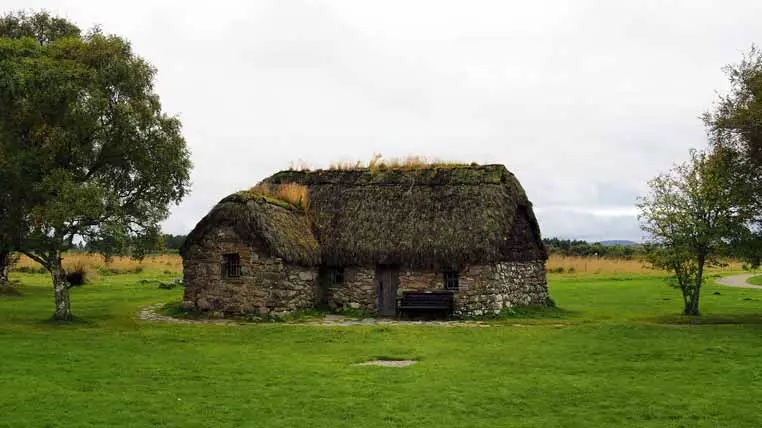
The Most Haunted Places in the World - Culloden Moor, Scotland
Culloden Moor is another worthy inclusion on the world’s most haunted places list.
It was the scene of the last land battle fought on British soil, a clash between the government forces led by Prince William Augustus, Duke of Cumberland, and the Jacobite loyalists to Charles Stuart (formally known as Charles Edward Louis John Casimir Sylvester Severino Maria Stuart), claimant to the thrones of England and Scotland.
The Battle of Culloden on April 16, 1746, was the last desperate attempt by the Jacobite rebellion (who had limited support from France) to restore the Stuart dynasty.
In just 40 minutes of battle, Charles Stuart’s entire army was decimated.
The rebel’s chances were already very slim from the start, mainly due to obvious tactical disadvantages:
1) The boggy terrain slowed the soldiers’ advance;
2) Charles Stuart’s army had inadequate equipment for the terrain;
3) Charles Stuart’s troops were already physically and mentally exhausted from their days of forced marching back to England;
4) The Duke of Cumberland’s army was larger (consisting of approximately 16 infantry and artillery battalions) and better suited to the rugged terrain.
The battle began with artillery barrages from both sides. However, in just a few minutes, Charles Stuart’s troops were overwhelmed by the much superior firepower of the enemy.
In less than 20 minutes, almost all of the Jacobite artillery had been destroyed. Since Charles Stuart had decided to not lead his army on the field but instead command from a distance through his generals, the Jacobites were not receiving orders effectively.
Desperate and disorganized, those who survived the artillery fire threw themselves against the enemy lines, composed mostly of experienced, well-equipped, and organized soldiers.
Here they were to be slaughtered by the government army, which employed a new defensive tactic against an attacking foe. Soldiers huddled together for support so their line could not be easily punctured.
Charles Stuart’s entire army was utterly decimated in less than 40 minutes. He was, however, able to escape. He had hidden in the vast forests surrounding Culloden Moor for five months until an opportunity to board a commercial ship and flee to Italy presented itself.
It is said that every year on April 16, the phantom cries of the hundreds of Jacobite soldiers slaughtered at Culloden Moor rise again, and their desperate battle against the government forces resumes.
Their cries echo for nearly 40 minutes before the silence descends again over the vast Culloden Moor.
Some witnesses have reported ghostly figures wandering in the area, and others speak of female wailing that can often be heard at night, perhaps the spirits of wives and mothers who have lost their loved ones in the terrible battle.
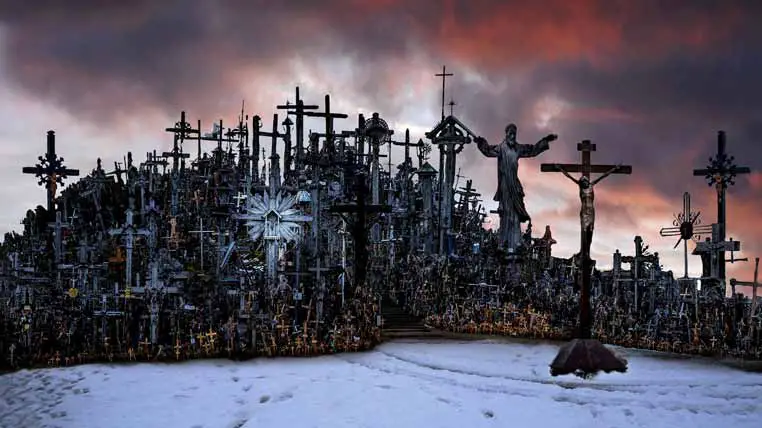
The Most Haunted Places in the World - Hill of Crosses, Lithuania
One of the most haunted places in the world could not be without the famous Hill of Crosses in Lithuania.
The exact origins of Kryžių Kalnas, or the Hill of Crosses, remain a mystery. Located less than 11 km from the city of Šiauliai, the Hill of Crosses “hosts” more than 100,000 crosses today, making it a pilgrimage site for locals and tourists.
| Year | Number of crosses |
|---|---|
| 1831 | Over 9.000 |
| 1900 | 130 |
| 1902 | 155 |
| 1922 | 50 |
| 1938 | Over 400 |
| 1961 | More than 5,000 crosses were destroyed |
| 1975 | More than 1,200 crosses were destroyed |
| 1990 | About 55.000 new crosses were erected |
| 2006 | Over 100.000 |
The first written mention of this strange place dates back to 1850, but some believe that the crosses appeared earlier, left by the grieving relatives of the victims of the revolts against the Tsarist regime in 1831 and later in 1863.
The Tsar suppressed national identity by limiting religious expression. Thus Lithuanians were forbidden to honor the dead, as the Orthodox faith requires, through burial rituals and graves marked with crosses.
Others believe that the first crosses appeared at the end of the 19th century after an apparition of the Virgin Mary holding the infant Jesus in her arms asked believers to cover the holy hill with icons and crosses.
During the Soviet occupation, religion and the Hill of Crosses remained forbidden. In April 1961, the entire area was destroyed by bulldozers and then burned by authorities.
But this did not stop the locals from “rebuilding” the Hill of Crosses. Every night, under cover of darkness, they carried dozens of crosses that they would stick into the ground. On the crosses, they would tie rosaries and icons painted by them.
Vilnius Puronas, a local artist, describes the place as follows:
The hill has many secrets. According to local folklore, there was once a church here. A terrible storm, never seen before, took place many generations ago, and the frightened locals took refuge in the church on the hill. But lightning struck the church, and the storm buried it under a layer of earth and rock, with dozens of souls still trapped inside.
Locals still speak of ghostly silhouettes of monks and ordinary people who, in a strange procession, surround the Hill of Crosses at sunrise.
Such magical appearances, visions of saints, or ghostly silhouettes have been part of the hill’s history for many generations.
According to another local horror story, at the beginning of the 1300s, a castle was erected on the hill by one of the pagan barons of Samogitia, once a state in the former Grand Duchy of Lithuania.
In 1348, the castle was destroyed by order of the Brothers of the Sword, a group of German warrior monks tasked with Christianizing Livonia (the region where Latvia and Estonia are located today).
Many believe that the Samogitians who survived the battle gathered the bodies of their slain comrades, stacked them, and then covered them with a thick layer of Earth, thus forming the hill on which thousands of crosses are now placed.

The Most Haunted Places in the World - Death Railway, Thailand
The fourth place in the top of the most haunted places in the world is occupied by Thailand’s Death Railway.
Death Railway has a bloody history – thousands of workers and nearly 20,000 prisoners of war lost their lives in constructing the railway connecting Thailand to Myanmar.
The history of Death Railway (or “the railway of death”) begins in 1942, during World War II. Thailand did not want to get involved in the war, opting to remain neutral.
But it was quickly invaded by Japan, who saw Thailand as an excellent strategic region for launching military offensives against Burma, a British colony.
A treaty signed between Thailand and Japan allowed Japan full access to Thai infrastructure. But at that time, Thailand did not benefit from an infrastructure that was developed enough for Japan to transport enough troops, supplies, and military equipment.
Using Asian workers and prisoners of war, Japan started to build roads and railways, including the infamous Death Railway project, which was set to reduce the supply time of the Japanese army by days, if not weeks.
The construction of the railway began in September 1942 in Burma and in November 1942 in Thailand.
According to an Australian government report, the vast project was carried out by over 250,000 workers and approximately 60,000 prisoners of war from different allied countries.
The working conditions, however, were horrifying. The workers were forced to work under the scorching sun, often without the necessary equipment, beaten, starved, and maltreated by Japanese and Korean soldiers.
Many were taken by dysentery and cholera, diseases that spread rapidly due to the lack of basic hygiene.
According to official documents, the daily ration for a worker was only 600 calories, while people were forced to work 14, 16, or even 18 hours a day.
The most challenging section of the Death Railway was the so-called Hellfire Pass, a tunnel of several hundred meters cut through hard rock. The workers were forced to cut through the stone without proper tools, often by the light of torches, and subjected to a constant risk of the tunnel’s collapse.
Despite all these things, the Death Railway project was finished ahead of schedule.
The railway needed extensive repairs to remain operational after the war. About 130 km of railway track are still used by the Royal Thai Railway, but certain sections, such as Hellfire Pass, have remained closed.
The total death toll was huge: 29% of British, 31% of Australians, 23% of Americans, and 19% of Dutch prisoners that worked on the construction of the railway, did not survive. The losses were even more significant among the Asian workers, with 90% killed during torture, by diseases, or by starvation.
After the war ended, 111 high Japanese officials were tried for war crimes, of which 32 were executed.
Part of the Death Railway tragedy was presented in the cinematic production The Railway Man (2013), which had in the leading roles Nicole Kidman, Colin Firth, and Stellan Skarsgard.
In an interview given to Daily Mail, Nicole Kidman talked about the oppressive atmosphere during the filming and some strange occurrences that made those on the film set believe that the area is still haunted.
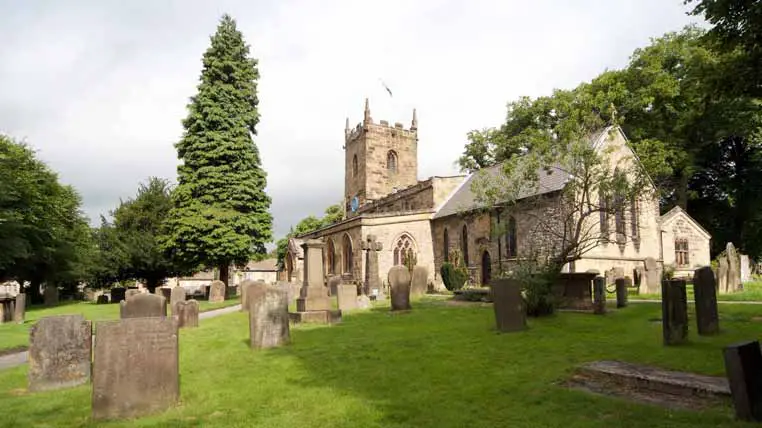
The Most Haunted Places in the World - Eyam Village, Derbyshire, UK
The podium dedicated to the most haunted places in the world is opened by an isolated village in Derbyshire, England.
Eyam Village (also known as the “Village of the Damned”) is a small village in Derbyshire, England that has become famous for the numerous strange events and ghostly apparitions reported here.
Today, Eyam is a neat, flourishing village where the main occupation of the locals is agriculture. However, it is also one of the main attractions for those passionate about the paranormal.
Eyam has a long, full of tragic events history. But the most horrifying period in the locality’s history occurred in 1665, during the plague epidemic that swept Europe.
It is unknown how the plague reached the small, isolated village. Some believe the virus spread in the village through containers of cloths, fur, and animal skins delivered by a supplier from London. The furs were likely infected with the carriers of the terrible disease, the fleas.
Less than a week after the parcels arrived, the village’s only tailor was already dead, and by the end of September, another five people had died. In October, twenty more deaths and more infections were reported the following month.
Scared, several villagers wanted to leave the village and take refuge with their relatives and friends in the neighboring villages and towns.
But at a general assembly attended by all the inhabitants of Eyam, a surprising decision was taken: no one was to leave the village, and everyone was to be quarantined.
The decision was taken so that the deadly virus would not spread to the neighboring villages, which until then had been spared from the disease.
The inhabitants of the neighboring villages soon learned about the brave decision of the people of Eyam and, in a joint effort, decided to do everything possible to supply them with food, drinking water, and all the necessary.
Thus, people came and left provisions near the stones that marked the entrance to Eyam. In turn, the inhabitants of Eyam left money in pots full of vinegar meant to sterilize the coins.
According to official documents, the village was devastated by the plague for 18 months. Despite the increasingly difficult conditions and the ever-increasing risk of infection, no villager left the village as long as the disease was present.
273 inhabitants died by the end of the plague epidemic in 1667. Only 83 survived.
Today, the locality still bears the signs of the epidemic that almost wiped Eyam Village off the face of the Earth.
Many beautiful houses belonging to the families wiped out by the plague have been preserved and can be visited today, almost four centuries after the epidemic.
In Eyam, there are many stories of ghosts. The locals talk about Miner’s Arms as one of the most haunted buildings in the village.
Transformed into a small motel, Miner’s Arms hosts tourists seeking thrills. Not infrequently, those staying here have been woken up in the middle of the night by mysterious footsteps and voices.
It is said that some guests were so scared that they did not wait until morning, packed their bags, and left the hotel in a hurry.
Another building presumed to be haunted is the old town hall in Eyam, which is currently owned by the Wright family.
The locals believe the ghost of a woman named Sarah Mills haunts the halls of the old town hall, and on the first floor, a ghost of an elderly man has been seen repeatedly. The room in question has been sealed off, and access for visitors is not allowed.
Today, Eyam village is known as one of the most haunted places in the U.K.
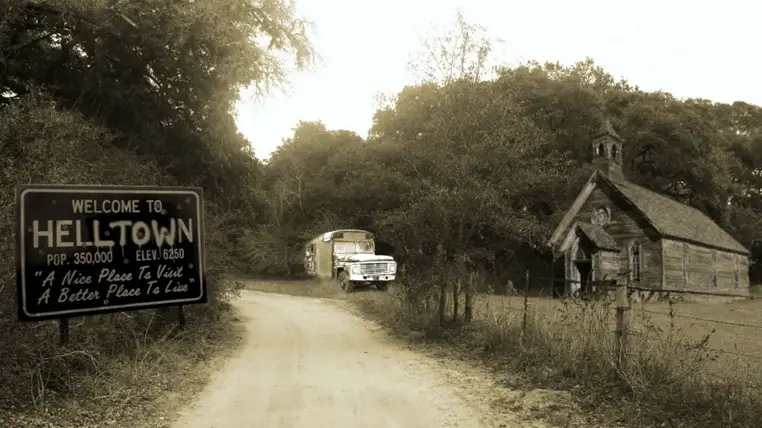
The Most Haunted Places in the World - Helltown, Ohio
The second position in the list of the most haunted places in the world is Helltown, Ohio, United States.
Helltown is an abandoned town in Cuyahoga Valley, Ohio. But unlike the ghost towns of the American West, Helltown is undoubtedly a unique town, with many horror stories and urban legends born here.
While some buildings bear the features of American architecture from the last century, most buildings were built around the 1950s, when the region was fully economically developed.
But how did a flourishing city turn into a ruin? How did Helltown become surrounded by dangerous roads that apparently lead nowhere? How did the old wooden church, once a meeting place for the entire local community, become today “decorated” with hundreds of overturned crosses?
The few remaining residents in the area – primarily poor people living in trailers or dilapidated houses scattered over a few dozen square kilometers around Helltown – all have their own theories about what happened there.
Some say that the church was turned into a procession place for Satanists who populated the town.
Others believe that the government evacuated the town after an accidental spill of toxic chemicals poisoned the groundwater. Those exposed to the chemicals, both people and animals, would have suffered terrible mutations.
Even the old school bus, which now lies abandoned on the side of the road, has become the center of a dark legend.
One evening, while the bus was taking the children from school to their homes, the driver pulled over after allegedly observing a victim lying on the road.
But it turned out to be a crazy criminal who attacked and killed the driver. The bus was abandoned the next day at the edge of the forest, far from the main road. As for the children, they were never seen again.
Whether true or not, some of the urban legends are confirmed, at least partially.
The federal government forced the area’s residents to abandon their homes, but not because of a chemical spill or a supernatural cover-up.
Due to massive deforestation across the United States, President Gerald Ford was forced in 1974 to approve a law that allowed the National Park Service to forcibly expropriate owners in areas that were to be turned into protected areas.
Although the grand project aimed to protect America’s forests, tens of thousands of landowners, like the residents of Helltown, had nothing to gain from the forced expropriations.
The area, including the abandoned town of Helltown, is now part of Cuyahoga Valley National Park.
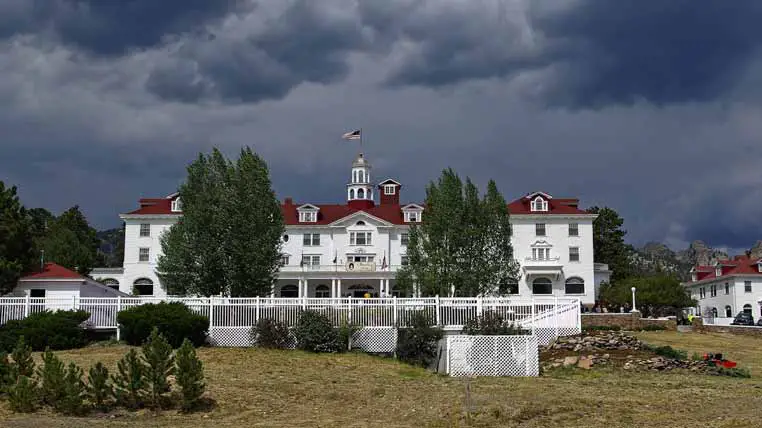
The Most Haunted Places in the World - Stanley Hotel, Colorado
Our first spot on the list of the world’s most haunted places is the well-known location to Stephen King fans – the Stanley Hotel in Colorado, the famous haunted hotel that inspired the bestseller The Shining.
But let’s start from the beginning because the history of this hotel is quite interesting.
Freelan Oscar Stanley was an American inventor, entrepreneur, hotelier, and architect. He invented a popular set of drawing tools used in almost every school, and Stanley became a multimillionaire overnight.
Oscar Stanley founded the Stanley Motor Carriage Company with the money from the patent sale.
Together with his twin brother, they developed a steam locomotive, the Stanley Steamer, which could reach a speed of 165 km/h, making it one of the strongest and fastest locomotives of the time.
In 1903, Oscar Stanley received a terrible diagnosis: tuberculosis. His doctor gave him less than six months to live and advised him to follow a strict diet, get lots of rest, and get as much fresh air as possible.
Stanley and his wife decided to move to Estes Park, a beautiful area near the Rocky Mountains. To everyone’s surprise, Stanley started feeling better.
Less than a month after arriving in Estes Park, he was already taking long walks through the dense forests at the foot of the mountains. The six months predicted by the doctor had passed, but the man was feeling better and better. Four years later, Stanley completely recovered.
Believing firmly in the healing power of those places, the Stanleys decided to transform Estes Park into a resort town.
They began building the famous Stanley Hotel in 1907. They also built a small hydroelectric power station in the mountains that supplied the hotel and part of the town.
The main body of the hotel and the concert hall was quickly completed in 1909, but the heating system was not inaugurated until 1979.
Nevertheless, guests arrived immediately. Tourists were welcomed by a fairytale landscape, and from the train station, they were taken to the hotel in a few steam trains called Mountain Wagons.
These were composed of a locomotive and two special carriages designed to offer passengers all the necessary comfort during the journey.
By then, the complex had already been extended and included eleven structures: the central hotel and several secondary bodies, a concert hall, a garage, a building that housed the staff, and some other independent bodies such as The Lodge or Stanley Manor (a cozy cottage where the Stanleys stayed).
But the business could have gone better. Tourists were getting fewer and fewer, and the locals in Estes Park said the hotel was haunted.
But things were about to take an unusual turn in 1974 when a famous horror author, Stephen King, checked into the hotel.
King was going through a difficult period, having problems with his latest novel, Darkshine, and was looking for a secluded place to help him with his creativity. Some acquaintances recommended Estes Park.
King’s first night at the Stanley Hotel was to be a milestone for the re-invention of the horror genre and was to turn Stephen King into one of the most important authors of this genre of all time.
King and his wife, Tabitha, were welcomed with great warmth by the few hotel staff. The two were housed in room 217, and they were the only guests in the hotel. They had dinner in the empty restaurant, and King decided to take a short tour of the property.
The isolated area where the hotel was located, the impressive size of the rooms, the vast corridors, and the desolate look of the main body inspired King’s first ideas for what was to become The Shining, a reference novel of the horror genre.
In an interview, the author remembered:
It was as if God had sent me there to hear and see those things. I dreamed of my three-year-old son running down the corridors, looking back over his shoulder with wide eyes, screaming. I woke up with tremendous fear. I was sweating all over, my heart was pounding hard, and I almost fell out of bed. I got up, lit a cigarette, and sat down on a chair, looking out the window towards the Rocky Mountains. And that was it. Then I created the foundation for The Shining in my mind.
Stephen King’s novel movie adaptation was the one that transformed the Stanley Hotel into one of the hottest points for paranormal lovers.
The psychological thriller directed by Stanley Kubrick in 1980 and starring Jack Nicholson, Shelley Duvall, Scatman Crothers, and Danny Lloyd was enthusiastically received by film critics. Still, the same cannot be said about Stephen King’s perception of the film.
He was not pleased with Kubrick’s vision and Nicholson’s portrayal, which he described as “over the top and completely uncharacteristic of the character I created in The Shining.”
Nevertheless, in the years that followed, the hotel has hosted numerous paranormal investigations, including those of the Ghost Adventures team from the Travel Channel and the Ghost Hunters from SyFy.
Paranormal manifestations have been reported in almost every room of this vast hotel, from dark silhouettes, strange laughter, and twinkling lights to objects moving on their own.
Room 217 is one of the focal points of these paranormal manifestations. Actor Jim Carrey stayed in room 217 during the filming of Dumb and Dumber (1994).
Apparently, something scared him so much that the actor ran out of the room in the middle of the night, half-naked.
Many guests on the fourth floor said they heard children running, laughing, and giggling. Others saw doors closing and opening on their own. In the past, the entire floor served as accommodation for employees, children, and nannies.
Could it be possible that the Grady twins are more than just figments of King’s macabre imagination?
Those visiting the hotel are still treated to an unusual experience worthy of one of the most sinister places in the world: a tour of the underground cave system under the hotel.
The caves have a high concentration of limestone and quartz, which some believe would help capture paranormal energy.
According to local legends, the hotel’s employees used the caves to quickly move from the main building to the complex’s other facilities.
And if we were to believe these horror stories, some of the old employees still haunt the underground galleries.
So what do you think about my list of the top most haunted places in the world? Do you agree with it?
At Ancient Theory we only use trusted sources to document our articles. Such relevant sources include authentic documents, newspaper and magazine articles, established authors, or reputable websites.
- Great Tenmei famine. wikipedia.org. [Source]
- Suicide forest skews Yamanashi's statistics. japantimes.co.jp.
- Edinburgh Castle. great-castles.com.
- Pre-1750 Buildings in Edinburgh Old Town Conservation Area. City of Edinburgh Council, City Development Department.
- Janice Hopper - Edinburgh Castle history: 900 years protecting Scotland’s capital.
- Catacombs A Timeless Journey. [Source]
- Natasha Geiling - Beneath Paris' City Streets, There's an Empire of Death Waiting for Tourists.smithsonianmag.com.
- Plunge into the heart of the Catacombes de Paris. en.parisinfo.com.
- Stull Cemetery, The Legendary Gateway To Hell In Kansas. americanhauntingsink.com.
- Jain Penner - Legend of Devil Haunts Tiny Town. The University Daily Kansan, 1974.
- Erwin Seba - Legends Linger Around Stull. Lawrence Journal-World.
- The Story Behind This Disturbing Kansas Cemetery Will Give You Goosebumps. onlyinyourstate.com.
- Kirsty McIntyre - Folklore Thursday: The Ghosts of Culloden Battlefield. clan.com.
- Christopher Duffy - The '45: Bonnie Prince Charlie and the untold story of the Jacobite Rising.
- Jacqueline Riding - Jacobites; A New History of the '45 Rebellion. Bloomsbury, 2016.
- Battle of Culloden. britannica.com. [Source]
- The Haunting Hill Of Crosses In Lithuania. mysteriousfacts.com.
- Burma Railway. wikipedia.org. [Source]
- 15 Most Haunted Places in Derbyshire & the Peak District. explorebuxton.co.uk.
- The Village of the Damned Interactive Ghost Walk Eyam Derbyshire. blackhistorymonth.org.uk.
- Dan Evon - Does ‘Helltown’ Film Document Weird Happenings in Abandoned Ohio Town?
- The Stanley Hotel - wikipedia.org. [Source]
- 9 Places From TV And Movies You Can Actually Visit. huffpost.com.






